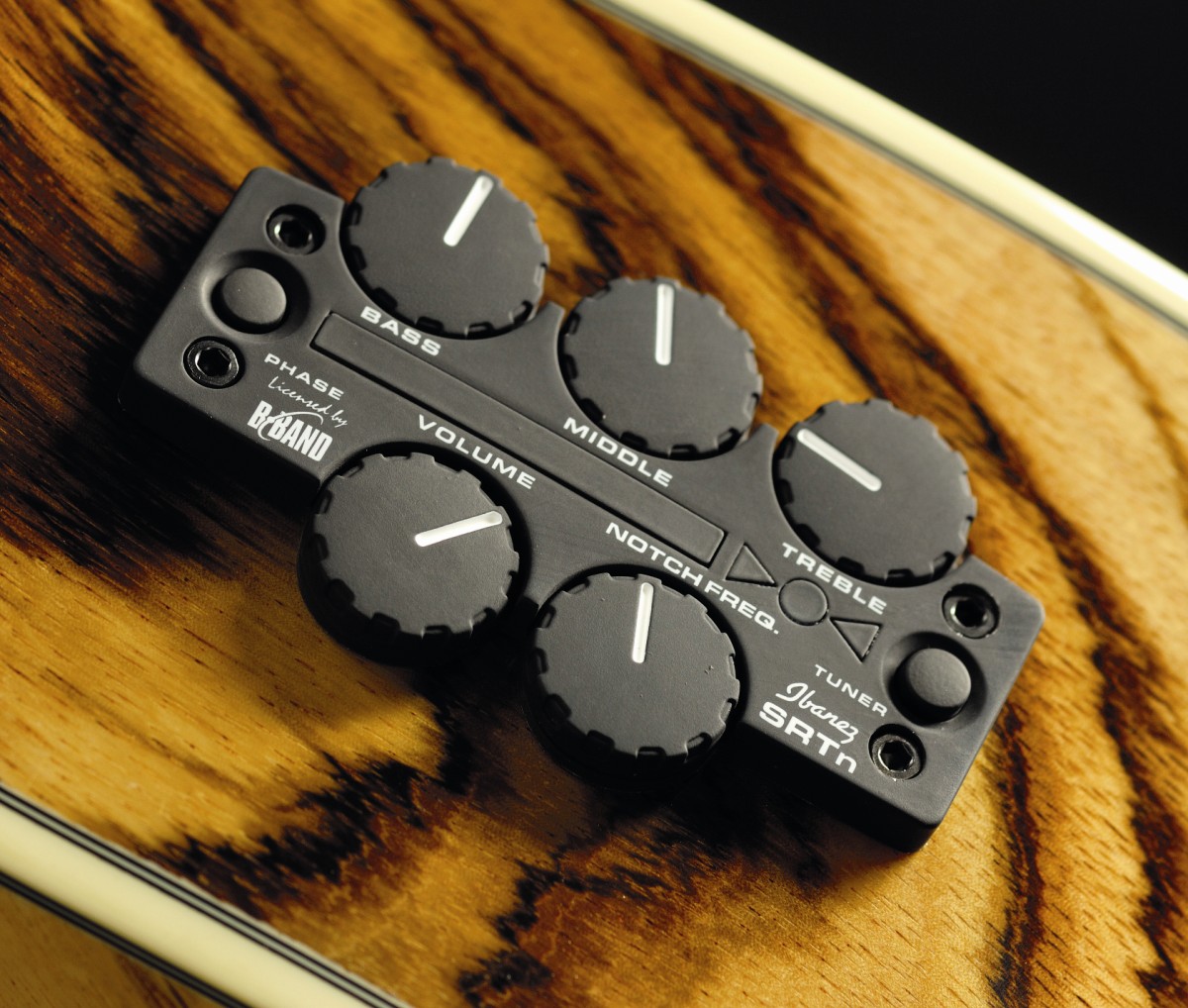MusicRadar Verdict
A unique voice in a striking package - all for £299.
Pros
- +
The unique appearance, the tone and the price tag.
Cons
- -
The looks are sure to prove divisive.
MusicRadar's got your back

The Ibanez EW20ZWE: it's a beauty!

The SRTn preamp helps the EW20ZWE to thrive in a live context.
Ibanez has gone for the jugular with its 2007 acoustic campaign, filling the gaps in its range with some conviction.
On one hand, Ibanez has targeted the more discerning end of the mid-price market with the launch of the most expensive and highly spec'd Artwood Series acoustic to date; the AWS1000ECE.
At the other end of the scale, bolstering the Exotic Wood line with the striking-but-thrifty EW20ZWE suggests the Ibanez boardroom is equally committed to winning hearts and minds in the entry level sector.
Of course, there's no shortage of competent electro-acoustics in the sub-£350 price bracket these days, but finding an entry-level instrument to genuinely raise the pulse remains a challenge.
With that in mind, Ibanez deserves the plaudits it has received for developing the Exotic Wood Series, whose marriage of imaginative tonewoods (typically used for body and soundboard), forward-thinking electrics and competitive prices (between £299 and £349) makes them a unique and refreshing prospect.
Overview
There are seven electros in the EW range, and while most of these follow the same basic outline as the EW20ZWE on test here - a voluptuous hourglass shape that Ibanez insists is unique to the EW range - the tonewoods used are all very different.
In terms of visual appeal, it's very much horses for courses; some will favour the rich cordia of the EW20WNE, the quilted ash of the EWC30ASE and the padauk of the EWC30PDE over the harsh zebrawood stripes of the EW20ZWE, while others will love this model's cosmetic clout.
Want all the hottest music and gear news, reviews, deals, features and more, direct to your inbox? Sign up here.
Less open to debate is the price - this is the cheapest EW, at £299. Sourced by Ibanez from West Africa, zebrawood is a rare find on a mass-produced acoustic, partly because of its relative cost, but also because its moderately coarse texture and defined grain give it something of a 'love-it-or-hate-it' appearance.
Mindful of this, Ibanez has kept everything else on the EW20ZWE clean and simple to avoid overcooking the design.
White binding runs along the edges of the deep EW body, traces the sloping cutaway, and is neatly applied to a rosewood fretboard whose only indulgence is an acrylic pearl inlay at the octave.
Chrome Ibanez-logo'd Smooth Tuners hold convincing pitch on a purposeful headstock. The abalone rosette doesn't betray this model's price and origins, while the bridge is a 'Ramparts' design that claims to boost output with its increased saddle stability.
The build is typical Ibanez, meaning that it's neat, tidy and sprinkled with features that either reassure - such as a dual-action truss rod in a thick mahogany neck - or excite - like the funky layout of the B-Band SRTn preamp that controls the UST pickup.
And when you take it off the shelf, the arguments for making a purchase get even stronger. It's true: with a rim depth of 120mm and a jumboesque curvature to the lower bout, the EW20ZWE might swamp diminutive guitarists.
This is more than compensated for by the exemplary cutaway (it allows some of the best access we've ever had), a satisfyingly chunky neck profile and a fingerboard that lets novices clamp barres painlessly while experienced players can bend, slide and fingerpick with precision.
Sounds
The first point to make is that the EW20ZWE features both a standard 6.4mm and an XLR output for direct connection to a PA. It's a great touch which, along with the onboard notch filter, suggests Ibanez has this electroacoustic earmarked as a live weapon.
We'd certainly go along with that - the pairing of the SRTn preamp and UST with a professional acoustic amp will see the EW20ZWE thrive in a live context, but to limit this model to gig duties would be a real waste.
The truth is, just as it doesn't look like anything else, the EW20ZWE doesn't sound like anything else either.
Unplugged, the EW body offers a mighty response and old-fashioned boom and delivers warm and firm authority in the low frequencies, superb balance in the mid-range, and a top end sparkle that comes alive when you dig into a solo.
Strum a chord and you hear each note ring out. Pick a note and you hear the complexities within it. This all adds up to one of the most individual and memorable tones this writer has heard from a £299 Chinese electro.
The EW20ZWE will find favour with gigging guitarists who want to stand out from the crowd with quirky looks and tone but don't want to pay for the privilege. It's among the best Ibanez electros this reviewer has tried and doesn't have much to fear from its rivals.